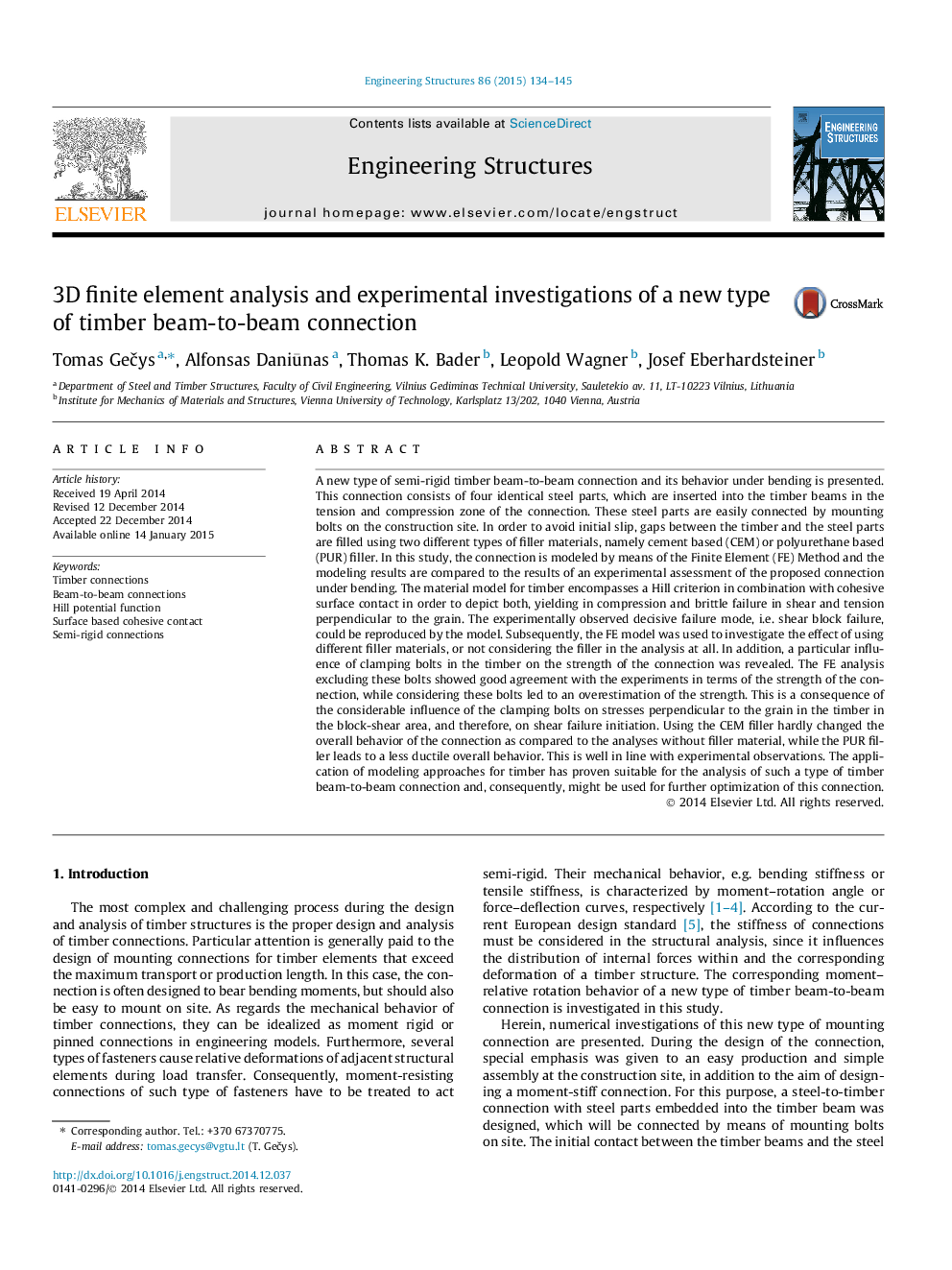| Article ID | Journal | Published Year | Pages | File Type |
|---|---|---|---|---|
| 266400 | Engineering Structures | 2015 | 12 Pages |
•3D numerical simulation of timber beam-to-beam connection under bending.•Hill criterion in combination with surface-based cohesive behavior for timber.•Different filler materials for a tight contact between timber and steel parts.•Experimental investigation of timber beam-to-beam connection under bending.
A new type of semi-rigid timber beam-to-beam connection and its behavior under bending is presented. This connection consists of four identical steel parts, which are inserted into the timber beams in the tension and compression zone of the connection. These steel parts are easily connected by mounting bolts on the construction site. In order to avoid initial slip, gaps between the timber and the steel parts are filled using two different types of filler materials, namely cement based (CEM) or polyurethane based (PUR) filler. In this study, the connection is modeled by means of the Finite Element (FE) Method and the modeling results are compared to the results of an experimental assessment of the proposed connection under bending. The material model for timber encompasses a Hill criterion in combination with cohesive surface contact in order to depict both, yielding in compression and brittle failure in shear and tension perpendicular to the grain. The experimentally observed decisive failure mode, i.e. shear block failure, could be reproduced by the model. Subsequently, the FE model was used to investigate the effect of using different filler materials, or not considering the filler in the analysis at all. In addition, a particular influence of clamping bolts in the timber on the strength of the connection was revealed. The FE analysis excluding these bolts showed good agreement with the experiments in terms of the strength of the connection, while considering these bolts led to an overestimation of the strength. This is a consequence of the considerable influence of the clamping bolts on stresses perpendicular to the grain in the timber in the block-shear area, and therefore, on shear failure initiation. Using the CEM filler hardly changed the overall behavior of the connection as compared to the analyses without filler material, while the PUR filler leads to a less ductile overall behavior. This is well in line with experimental observations. The application of modeling approaches for timber has proven suitable for the analysis of such a type of timber beam-to-beam connection and, consequently, might be used for further optimization of this connection.
